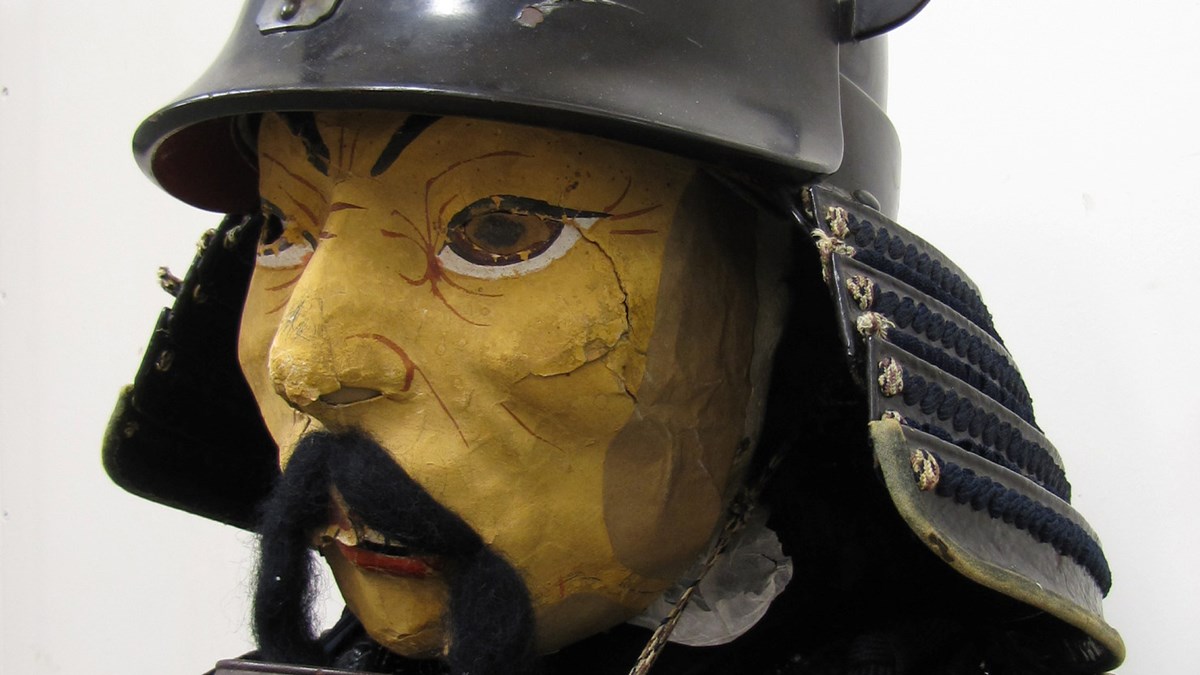Japanese armor

In Vänersborgs Museum´s collections there is a Japanese armor with a helmet. But why is there such a thing in the collections?
This is an armor (called yoroi ) with a helmet (called a kabuto ) from Japan donated to Vänersborgs Grammar School in the late 1800s.
Around the body of the suit´s front and back there are layers with leather tiles (probably) that appear to be painted. To get to a hard surface so the leather can have undergone a process where you boil the leather in water, sometimes mixed with wax or oil. The mask of paper is made at a later date and may have been added when it was donated to the grammar school .
The gramar school collections started during the 1860s when the school was partly supported by the Royal Academy. The Acadamy of the Natural History Museum came to donate 170 mineral-specimens, 30 birds, 20 fish, six mammals and amphibians which had been requested by Vänersborg. Carl Samuel Hultström (1806-1891), the principal of the school was delighted and subsequently published an appeal in the local magazine where he asked the public to help with donations. His petition gave response and generated a large variety of items of all types and kinds, including this samurai armor.
When Vänersborg museum was established, the grammar school collections were moved to the museum.






